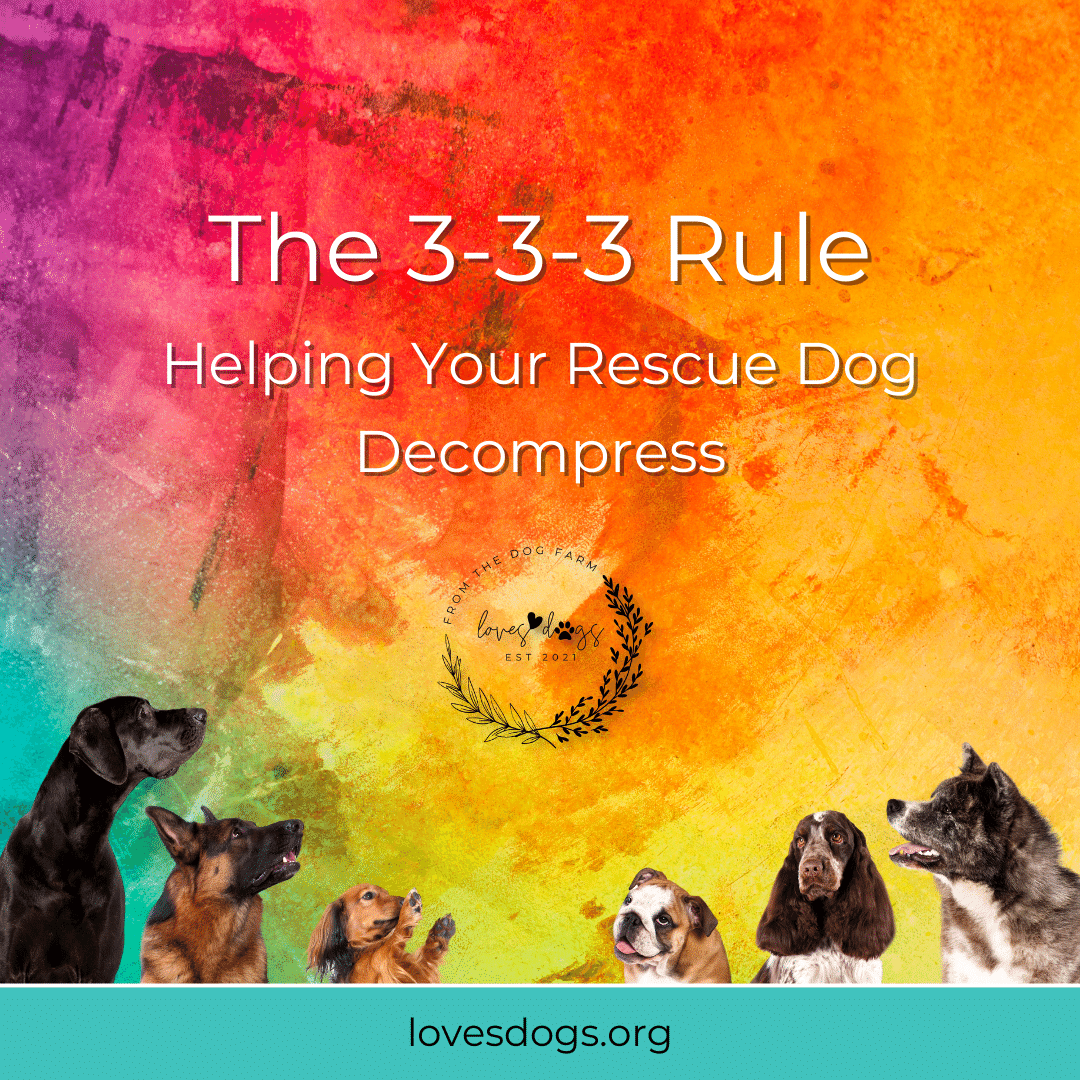
Rescue dogs are special–they come into our lives and ignite a love that some can only imagine. It’s important to remember that, like us, they can live with emotional baggage from their past. While you know that they’re safe now, your rescue dog may not fully understand that yet, so be sure to provide a healthy, positive environment that allows them to decompress from their long journey home. That’s where the 3-3-3 Rule of adopting a rescue dog comes in.
What Is the 3-3-3 Rule of Adopting a Rescue Dog?
The 3-3-3 Rule provides a basic framework for gauging the time your rescue dog may need to settle, but it’s also crucial to know that, like us, all dogs are different, so some may need more time to adjust.
The 3-3-3 Rule stands for milestones in your rescue dog’s life: 3 Days, 3 Weeks, and 3 Months. To get started, let’s walk around in their paws for a minute…
Think about a time where you started something new–it could be a new school, a new job, a new hobby or skill. Right at the beginning, did you feel completely comfortable? Did you understand the ins and outs immediately? You aced that first day, right?
Well, maybe you did, or maybe you didn’t, but do you remember feeling some apprehension? Did you feel anxious, nervous, or timid? Like you didn’t know what you didn’t know?
Of course you did.
This is exactly how your new rescue dog feels. They’re in a brand new environment with new sounds, new smells, new faces, new everything. And while you’d love to simply tell them, “Everything will be okay,” they might not be ready to believe you…yet. But give them time. Some dogs will follow the 3-3-3 journey like clockwork; others may need more time. Be sure to give them grace, calm, positive reinforcement, and time as they adjust.
A Rescue Dog’s First Milestone: 3 Days
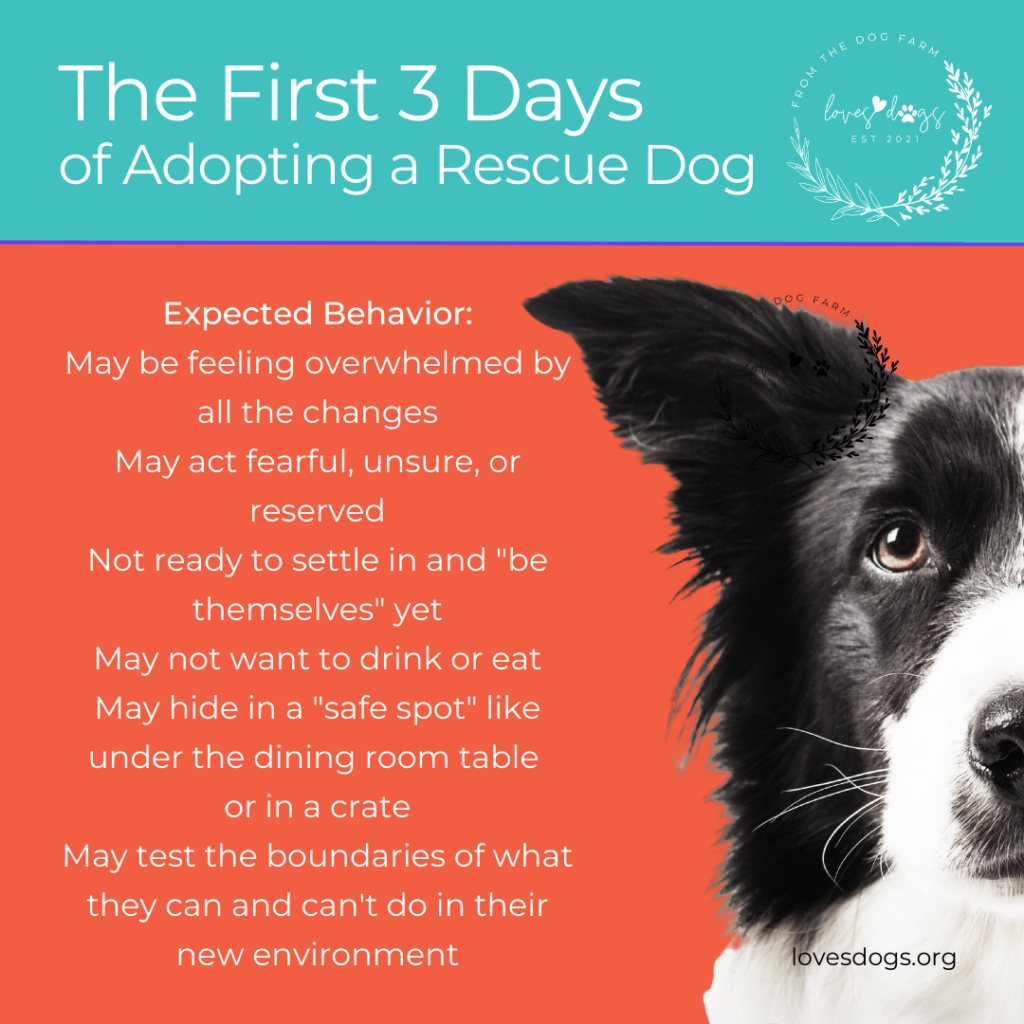
During the first 3 days, your rescue dog is feeling overwhelmed by all the changes. Their whole world has completely changed. They may seem fearful and unsure of what’s going on, and they aren’t ready to settle in and be themselves yet. Water and dog food may not taste so good during this time of stress, so they may not be interested in drinking or eating, but that’s okay. If you find them hiding under the dining room table or in their crate, that’s normal, too–these are perceived as their “safe spots.” They may even test the boundaries of what they can and can’t do, kind of like a toddler or teen.
Don’t be alarmed. Simply be a peaceful, calm, and comforting figure in their lives, and allow them to move forward at their own pace.
A Rescue Dog’s Second Milestone: 3 Weeks
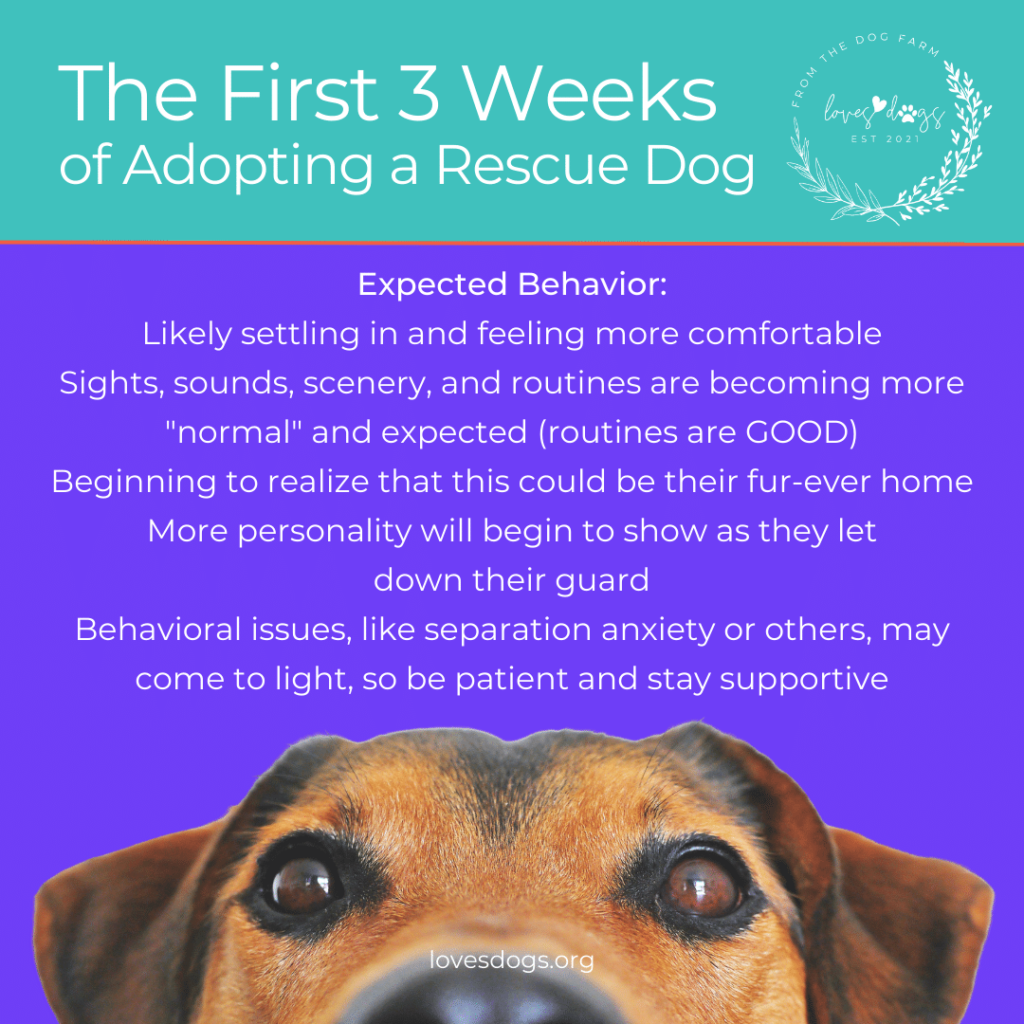
By this time, your rescue dog is settling in, and things are normalizing in their world. They’ve become accustomed to sights, sounds, scenery, and routines, and they’re pondering the possibility that this could be their forever home. Depending on your rescue dog’s history, they may be a little afraid to fully settle in, but they’re acknowledging that this could be the real thing. Stay supportive.
You’ll see more of their personality as they let down their guard. If trauma or behavioral issues are part of their past, you may see these things begin to shine through during this period. Continue to be a peaceful, calm, and comforting figure in their lives.
If behavioral issues come to light, be patient. We all have our quirks, right?
One of the most common issues is separation anxiety, a condition where your dog exhibits stress and behavioral problems when separated from you. Things like chewing, barking and howling, pacing, digging, and escaping are all signs of separation anxiety. While this is worthy of an entire blog series, a few simple tactics right at home can help with separation anxiety:
- Give your dog a special treat every time you leave–one of our favorites is a puzzle toy stuffed with regular peanut butter (avoid any peanut butter where Xylitol appears on the label–it’s toxic).
- Be low-key and as calm as possible when you leave and arrive home.
- Practice going out the door, standing just outside the door, and then coming back in several times over several days. You’re teaching your dog that when you leave, you also come back.
- Check out natural calming supplements.
- Leave out recently worn clothes out that smell like you.
- Make sure that your dog gets ample exercise each day–a tired dog is often a good dog.
If other behavioral issues come to light, research them to better understand where your dog is coming from. Consider signing up for obedience classes or dog training to positively and calmly deal with challenges.
A Rescue Dog’s Second Milestone: 3 Months

By this point, your rescue dog is more comfortable with you and feeling safe and secure in their new home. You’re building trust, and you’re forming a true bond where your dog feels loved and accepted. Routines are just that–routine–and that feels great to your rescue dog. If they’re still timid, that’s okay. Just like humans, some dogs acclimate differently, and they’re journey may be longer.
But, remember, while working with your rescue dog is a lifelong commitment, embrace how far they’ve come. Celebrate it.
When we better understand dogs and how they think and react, we’re better equipped to help them have a long, flourishing life of love and security. The 3-3-3 Rule is one of those antidotes that offer insight into the lives of the dogs we love.
Walk, play, love, repeat.
#lovesdogs #dogswhoareloved
P.S. Do you love dogs like we do? Yes, we thought so! ❤️
Show your love with our Life Is Better With Dog 20-Ounce Vagabond Tumbler, and keep your roadtrip beverages the right temperature until the next pit stop! Proceeds benefit our Loves Dogs 501(c)(3) Nonprofit Dog Rescue. Read more about our mission here, and click here to order your tumbler today!




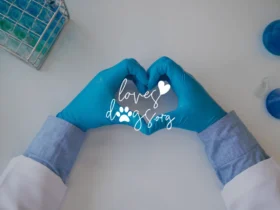


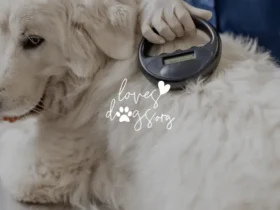
Find Loves Dogs on Social